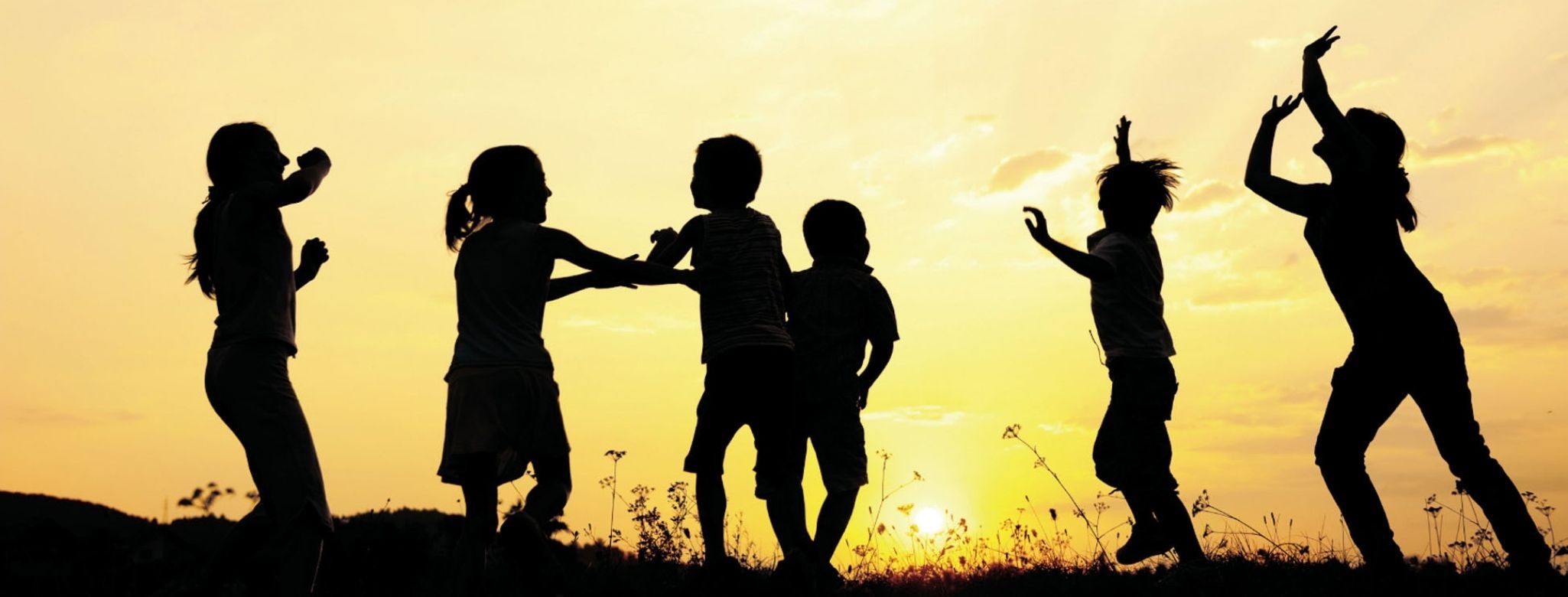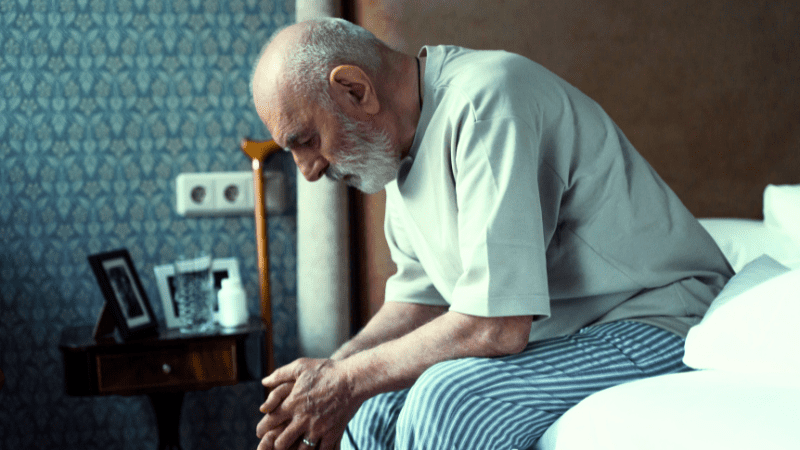Opinion
Leave our Kids Alone

Open Letter to Alberta School Board or Extracurricular Activity Organization
[Name of School Board or Organization]
At a recent stop in the Netherlands, Prime Minister Justin Trudeau attended a Q&A at Leiden University. I have included a link to the Q&A for your reference: https://www.youtube.com/watch?v=i5rTzy2bLQk. During the event, the camera showed the classroom & students numerous times. To my surprise, the classroom was full and there was not a mask in sight. How could this be as public health officials across Canada continue to push mask mandates on children as young as 5?
Upon further research, Leiden University has taken a drastically different approach than schools and extracurricular activity organizations in Canada. In short, they are treating this virus as all other viruses have been treated prior to 2020. Some of the highlights include: no mask mandates, no mRNA treatment mandates, self-tests and PCR tests are not compulsory and reporting of positive test results are always voluntary. I have included a link to Leiden’s campus protocol for your reference: https://www.universiteitleiden.nl/binaries/content/assets/algemeen/reglementen/corona/campus-protocolen10.2-25092021.pdf.
With that said, I would like to know why [name of school board or organization] is taking such a drastically different approach with my child? Please provide information to support the following immediately upon receipt of this letter:
- Trial data that has been completed by your organization or an accredited and independent scientific organization to support mask mandates for children aged 5-18.
- Similarly, trial data to support mRNA treatment mandates for children aged 12-18. If your organization intends to implement this policy for those aged 5-11, data to support this mandate.
- Analysis that your organization has completed to determine that you are not violating the Charter of Rights and Freedoms, the Canadian Bill of Rights, the Privacy Act, the Canadian Human Rights Act, the Criminal Code and any other legislation currently in force in Canada.
Presuming you are unable to provide the requested information, I immediately demand that you end these unscientific and divisive policies and let my [son/daughter] enjoy their childhood.
Respectfully submitted,
[Your name]
Great Reset
Canada’s MAiD (State Sanctioned Murder) Report Just Dropped

It’s More Horrifying Than Anyone Will Admit
There is no dignity in a society that sees the suffering and chooses to eliminate the sufferer instead of the suffering.
Canada finally released its 2024 MAiD (state sanctioned murder) report, shockingly quiet so people wouldn’t see it. Right after the budget, and right before Christmas. A late-November drop, as if 16,499 state-sanctioned murders were an administrative side note instead of a national alarm bell, one that should be absolutely terrifying Canadians. That number is a almost a 7% increase!!! from the year prior. Euthanasia now accounts for 5.1% of all deaths in the country. Let that sit for a minute. More than one out of every twenty deaths in Canada is no longer natural, accidental, or medical it’s chosen, coerced, approved, and facilitated by the state.
Now the most disturbing trend isn’t the overall rise. It’s the massive increase in Track 2 deaths, these are people who were NOT AT ALL terminally ill. Those deaths rose by 17%.
Kelsi Sheren is a reader-supported publication.
To receive new posts and support my work, consider becoming a free or paid subscriber.
17%!
Track 2 is MAiD’s (state sanctioned murder) quiet backdoor, one that almost anyone can access. People who aren’t dying, but are suffering, disabled, lonely, financially struggling, or simply worn down by a system that failed to care for them. The government likes to use sterile language “grievous and irremediable condition” but it refuses to define it. That ambiguity isn’t an accident. It’s policy. It’s how they kill people without justification.
The numbers don’t lie, even when the government tries to hide them. Since legalization, Canada has recorded 76,475 deaths by MAiD up to the end of 2024. Realistically, by today we’re closing in on 92,000.
That’s the population of a mid-sized city. Gone.
92,000 human beings. Gone, before their time all because CAMAP (Canadian Association of MAiD Assessors and Providers) convinced people who were suffering they were too damn weak to try.
Quebec leads the country with 5,998 deaths in 2024. Ontario follows with 4,944, then British Columbia at 2,997. Even these numbers don’t match what provincial reports say. Quebec claims 6,058. BC says 3,000. Why the discrepancy? No one seems eager to answer.
When the data moves faster than the government’s honesty, you know something’s off and something been off for a minute now.
Track 2 deaths have always been the canary in the coal mine, yet no ones seems to care unless it’s one of their family members. Those not tied to terminal illness hit 732 cases in 2024. In 2021 there were 224. The curve isn’t just rising; it’s accelerating at a pace that will destroy a country.
And who are these people?
They’re younger. They’re more often women. They’re overwhelmingly people living with disabilities. They are Canadians who needed support and instead got a syringe. More than 61% of Track 2 deaths were people living with disabilities. Yet many disabled Canadians don’t even identify as disabled on paper. So the real number? Higher. Much higher.
Every major reason listed for choosing MAiD (state sanctioned murder) loss of independence, loss of mobility, inability to participate in meaningful activities is directly tied to disability or chronic health issues. When your supports are stripped, “choice” becomes a fiction.
The “other” category, is where any sort of accountability goes to die in this country along with our souls. The most suspicious data point continues to grow unnoticed. The “other” category is over 46% of disabled Track 1 deaths and 56% of disabled Track 2 deaths are filed under “other.”
What’s in “other”?
Organ failure. Autoimmune disease. Frailty. Chronic pain. Diabetes. Mental disorders.
In any honest system, these would not be “miscellaneous.” In Canada’s system, they are conveniently undefined so nothing can be challenged.
People choosing Track 2 death are more likely to be poor, living in struggling neighbourhoods, in institutions and on disability. This isn’t compassion. It’s triage disguised as mercy. When life becomes unaffordable, MAiD (state sanctioned murder) becomes the “cheap solution.”
One of the leading causes of this choice to die is loneliness….this part should haunt every Canadian with a conscience. The report tries to downplay loneliness as a factor, but the numbers betray reality:
21.9% of Track 1 deaths
44.7% of Track 2 deaths
…were tied single handedly to loneliness and isolation.
That’s at least 3,800 people in 2024 who died because they were alone.
But anyone who’s worked with veterans, trauma survivors, or the disabled knows the truth loneliness is wildly underreported. People list their medical condition to qualify. But loneliness and despair? That’s the gasoline soaking everything underneath.
Track 2 recipients were three times more likely to be receiving mental health or social service support compared to Track 1. The mental illness “safeguards”? They’re paper-thin.
The government wants us to believe MAiD (state sanctioned murder) is about dignity. But dignity is a human experience, not a checkbox. Dignity requires connection, support, purpose, safety. None of those can be injected into a vein.
MAiD (state sanctioned murder) was sold as a last resort for the dying. It is now an early exit for the neglected. There is no integrity in a system where people choose death because life became bureaucratically inconvenient. There is no compassion in telling a disabled person the waitlist for care is years but death is available next Tuesday. There is no dignity in a society that sees the suffering and chooses to eliminate the sufferer instead of the suffering.
Parliament is currently debating Bill C-218, which would stop the expansion of MAiD for mental illness. Given what the data shows, mental illness is already driving many Track 2 deaths, even though it isn’t technically allowed on its own.
Canada is no longer drifting, its fully submerged in the dark and this is something that can’t be undone once normalized. MAiD (state sanctioned murder) is no longer a rare compassionate exception. It is becoming a cultural default for people society doesn’t know how to support.
If we don’t reverse this slide now, we’ll look back and wonder how we ever confused convenience with compassion. This system isn’t mercy. It’s abandonment dressed up as policy.
The conversation needs to get louder, not gentler and I plan to make it so loud the pro death cult’s ears bleed.
KELSI SHEREN
https://csfv.gouv.qc.ca/
https://alexschadenberg.
https://alexschadenberg.
https://alexschadenberg.
– – – – – – – – – – – – –
One Time Donation! – Paypal – https://paypal.me/
Buy me a coffee! – https://buymeacoffee.com/
Let’s connect!
Youtube – https://www.youtube.com/@
Substack: https://substack.com/@
TikTok – https://x.com/KelsiBurns
Censorship Industrial Complex
A Democracy That Can’t Take A Joke Won’t Tolerate Dissent

From the Frontier Centre for Public Policy
By Collin May
Targeting comedians is a sign of political insecurity
A democracy that fears its comedians is a democracy in trouble. That truth landed hard when Graham Linehan, the Irish writer behind Father Ted and The IT Crowd, stepped off a plane at Heathrow on Sept. 1, 2025, and was met by five London Metropolitan Police officers ready to arrest him for three posts on X.
Returning to the UK from Arizona, he was taken into custody on the charge of “suspicion of inciting violence”, an allegation levelled with increasing ease in an age wary of offence. His actual “crime” amounted to three posts, the most contentious being a joke about trans-identified men in exclusively female spaces and a suggestion that violated women respond with a swift blow to a very sensitive part of the male’s not-yet-physically-transitioned anatomy.
The reaction to Linehan’s arrest, from J.K. Rowling to a wide array of commentators, was unqualified condemnation. Many wondered whether free speech had become a museum piece in the UK. Asked about the incident, British Prime Minister Keir Starmer defended his country’s reputation for free expression but declined to address the arrest itself.
Canada has faced its own pressures on comedic expression. In 2022, comedian Mike Ward saw a 12-year legal saga end when the Supreme Court of Canada ruled five-to-four that the Quebec Human Rights Commission had no jurisdiction to hear a complaint about comments Ward made regarding a disabled Quebec boy. The ruling confirmed that human rights bodies cannot police artistic expression when no discrimination in services or employment has occurred. In that case, comic licence survived narrowly.
These cases reveal a broader trend. Governments and institutions increasingly frame comedy as a risk rather than a social pressure valve. In an environment fixated on avoiding perceived harm, humour becomes an easy and symbolic target. Linehan’s arrest underscores the fragility of free speech, especially in comedic form, in countries that claim to value democratic openness.
Comedy has long occupied an unusual place in public life. One of its earliest literary appearances is in Homer’s Iliad. A common soldier, Thersites, is ugly, sharp-tongued and irreverent. He speaks with a freedom others will not risk, mocking Agamemnon and voicing the frustrations of rank-and-file soldiers. He represents the instinct to puncture pretension. In this sense, comedy and philosophy share a willingness to speak uncomfortable truths that power prefers to avoid.
Aristotle, in his Poetics, noted that tragedy imitates noble actions and depicts people who are to be taken seriously. Comedy, by contrast, imitates those who appear inferior. Yet this lowly status is precisely what gives comedy its political usefulness. It allows performers to say what respectable voices cannot, revealing hypocrisies that formal discourse leaves untouched.
In the Iliad, Thersites does not escape punishment. Odysseus, striving to restore order, strikes him with Agamemnon’s staff, and the soldiers laugh as Thersites is silenced. The scene captures a familiar dynamic. Comedy can expose authority’s flaws, but authority often responds by asserting its dominance. The details shift across history, but the pattern endures.
Modern democracies are showing similar impatience. Comedy provides a way to question conventions without inviting formal conflict. When governments treat jokes as misconduct, they are not protecting the public from harm. They are signalling discomfort with scrutiny. Confident systems do not fear irreverence; insecure ones do.
The growing targeting of comedians matters because it reflects a shift toward institutions that view dissent, even in comedic form, as a liability. Such an approach narrows the space for open dialogue and misunderstands comedy’s role in democratic life. A society confident in itself tolerates mockery because it trusts its citizens to distinguish humour from harm.
In October, the British Crown Prosecution Service announced it would not pursue charges against Linehan. The London Metropolitan Police Service also said it would stop recording “non-crime hate incidents”, a controversial category used to document allegations of hateful behaviour even when no law has been broken. These reversals are welcome, but they do not erase the deeper unease that allowed the arrest to happen.
Comedy survives, but its environment is shifting. In an era where leaders are quick to adopt moral language while avoiding meaningful accountability, humour becomes more necessary, not less. It remains one of the few public tools capable of exposing the distance between political rhetoric and reality.
The danger is that in places where Agamemnon’s folly, leadership driven by pride and insecurity, takes root, those who speak uncomfortable truths may find themselves facing not symbolic correction but formal sanctions. A democracy that begins by targeting its jesters rarely stops there.
Collin May is a Senior Fellow with the Frontier Centre for Public Policy, a lawyer, and Adjunct Lecturer in Community Health Sciences at the University of Calgary, with degrees in law (Dalhousie University), a Masters in Theological Studies (Harvard) and a Diplome d’etudes approfondies (Ecole des hautes etudes, Paris).
-

 National2 days ago
National2 days agoMedia bound to pay the price for selling their freedom to (selectively) offend
-

 Business1 day ago
Business1 day agoIs there a cure for Alzheimer’s Disease?
-

 Bruce Dowbiggin1 day ago
Bruce Dowbiggin1 day agoSometimes An Ingrate Nation Pt. 2: The Great One Makes His Choice
-

 Alberta1 day ago
Alberta1 day agoNew era of police accountability
-

 C2C Journal1 day ago
C2C Journal1 day agoLearning the Truth about “Children’s Graves” and Residential Schools is More Important than Ever
-

 Energy2 days ago
Energy2 days agoCanadians will soon be versed in massive West Coast LPG mega-project
-

 Artificial Intelligence2 days ago
Artificial Intelligence2 days ago‘Trouble in Toyland’ report sounds alarm on AI toys
-

 Brownstone Institute1 day ago
Brownstone Institute1 day agoThe Unmasking of Vaccine Science







